三角波發(fā)生器:Triangle-Wave Generator
A constant amplitude triangular-wave generator is shown in Figure 27. This circuit provides a variable frequency triangular wave whose amplitude is independent of frequency.
The generator embodies an integrator as a ramp generator and a threshold detector with hysterisis as a reset circuit. The integrator has been described in a previous section and requires no further explanation. The threshold detector is similar to a Schmitt Trigger in that it is a latch circuit with a large dead zone. This function is implemented by using positive feedback around an operational amplifier. When the amplifier output is in either the positive or negative saturated state, the positive feedback network provides a voltage at the non-inverting input which is determined by the attenuation of the feedback loop and the saturation voltage of the amplifier. To cause the amplifier to change states, the voltage at the input of the amplifier must be caused to change polarity by an amount in excess of the amplifier input offset voltage. When this is done the amplifier saturates in the opposite direction and remains in that state until the voltage at its input again reverses. The complete circuit operation may be understood by examining the operation with the output of the threshold detector in the positive state. The detector positive saturation voltage is applied to the integrator summing junction through the combination R3 and R4 causing a current I+ to flow.
The integrator then generates a negative-going ramp with a rate of I+/C1 volts per second until its output equals the negative trip point of the threshold detector. The threshold detector then changes to the negative output state and supplies a negative current, I-, at the integrator summing point. The integrator now generates a positive-going ramp with a rate of I-/C1 volts per second until its output equals the positive trip point of the threshold detector where the detector again changes output state and the cycle repeats. Triangular-wave frequency is determined by R3, R4 and C1 and the positive and negative saturation voltages of the amplifier A1. Amplitude is determined by the ratio of R5 to the combination of R1 and R2 and the threshold detector saturation voltages. Positive and negative ramp rates are equal and positive and negative peaks are equal if the detector has equal positive and negative saturation voltages. The output waveform may be offset with respect to ground if the inverting input of the threshold detector, A1, is offset with respect to ground.
The generator may be made independent of temperature and supply voltage if the detector is clamped with matched zener diodes as shown in Figure 28.
The integrator should be compensated for unity-gain and the detector may be compensated if power supply impedance causes oscillation during its transition time. The current into the integrator should be large with respect to Ibias for maximum symmetry, and offset voltage should be small with respect to VOUT peak.

圖27所示電路是一個幅值固定不變的三角波發(fā)生器。該電路產生頻率可變的三角波信號,但其幅值與頻率無關。
此電路用積分器產生斜坡信號,用閾值檢測器作為復位電路。積分器前文已詳細介紹過,這里不再贅述。閾值檢測器就是一種回差范圍較大的鎖存電路,與施密特觸發(fā)器相似。電路的功能是通過OP的正反饋路徑實現的。不論放大器輸出是正是負,只要OP達到輸出飽和狀態(tài),OP正反饋路徑就會在OP同相輸入端加上一個電壓,該電壓的大小由OP正反饋路徑的衰減和OP輸出飽和時的電壓共同決定。為了使放大器的狀態(tài)發(fā)生改變,OP輸入端的電壓必須改變極性,并且改變量必須大于OP輸入失調電壓,接著放大器的輸出就會改變極性并達到飽和,直到輸入端的電壓再次反相,再重復這個過程。掌握閾值檢測器在正值輸出時的工作過程就可以了解整個電路的原理。檢測器的正的飽和輸出電壓通過R3和R4加在積分器的求和節(jié)點上,電流為I+。
積分器隨即產生由正到負的斜坡信號,斜率為I+/C1(伏/秒)。當這個輸出信號達到閾值檢測器的低電壓門限時,閾值檢測器的輸出變成負值,加在積分器求和節(jié)點的電流反向,變成I-。積分器的輸出變成由負到正的斜坡信號,斜率為I-/C1(伏/秒)。當這個輸出信號達到閾值檢測器的高電壓門限時,閾值檢測器的輸出再次變成正值,至此開始循環(huán)。三角波的頻率是由R3、R4、C1以及OPA1的飽和輸出電壓的大小決定的。幅值則等于R5與R1、R2(之和)的比值乘以閾值檢測器的飽和輸出電壓。三角波信號兩個斜邊的斜率絕對值相等,如果閾值檢測器正向飽和電壓和反向飽和電壓的大小相等,那么三角波信號的正向峰值和反向峰值也相等。如果閾值檢測器A1的反相輸入端對地有一個偏置電壓,那么輸出波形也將帶有一個對地的偏置。
只要按圖28那樣在閾值檢測器中使用性能匹配的穩(wěn)壓二極管,那么這個信號發(fā)生器電路就可以做到與溫度變化和電源電壓變化無關。
圖中積分器所用OP應該是單位增益穩(wěn)定的,如果電源阻抗導致閾值檢測器在輸出轉換期間發(fā)生振蕩,那么閾值檢測器也需要進行補償。流入積分器的電流應該大于I bias,以求得最佳的對稱性,失調電壓也應小于VOUT的峰值。
 電子發(fā)燒友App
電子發(fā)燒友App








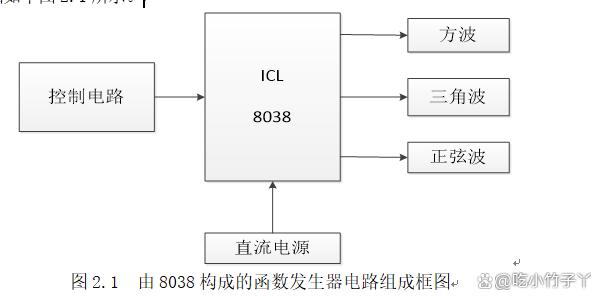
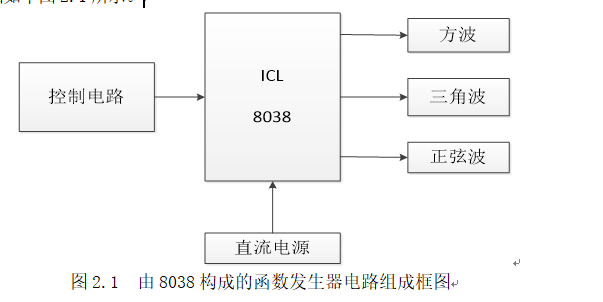




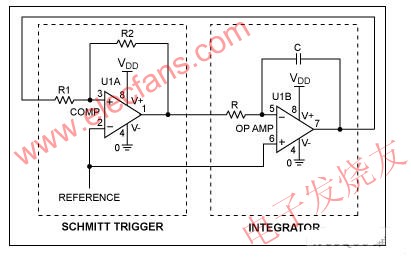
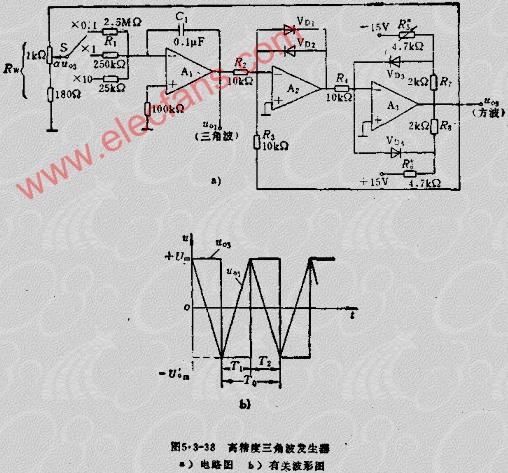
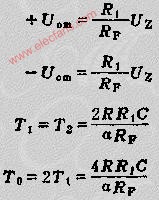

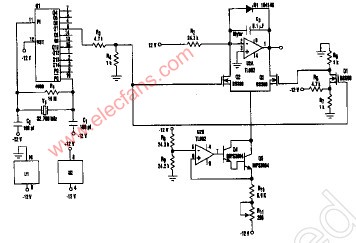
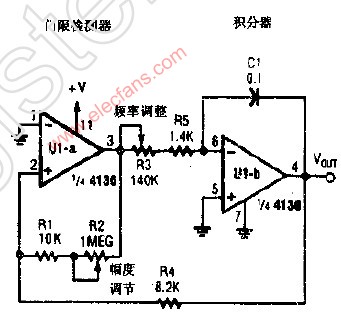
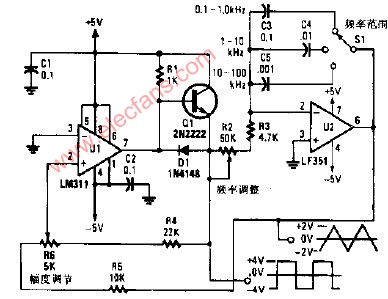
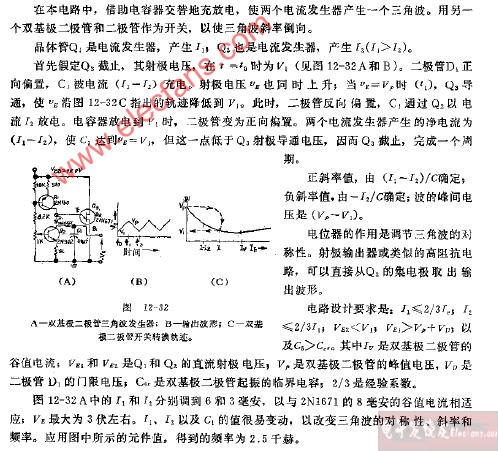
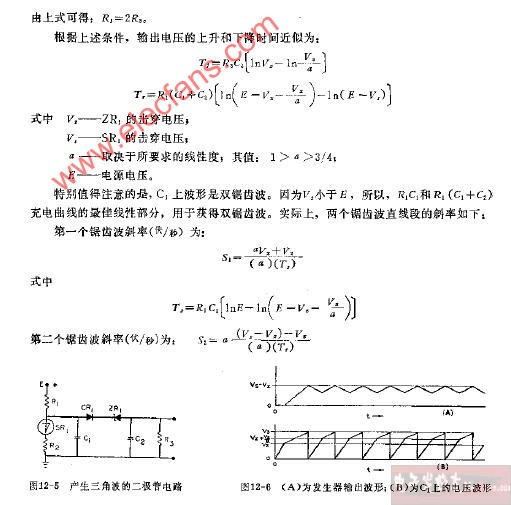
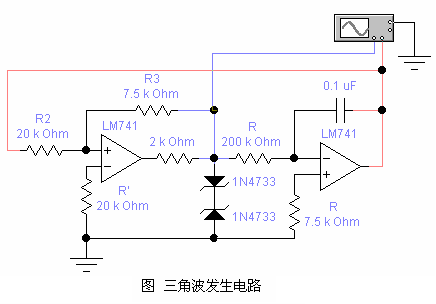

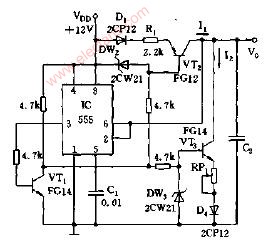
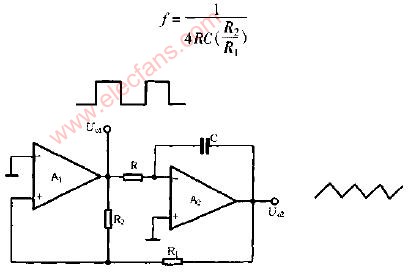
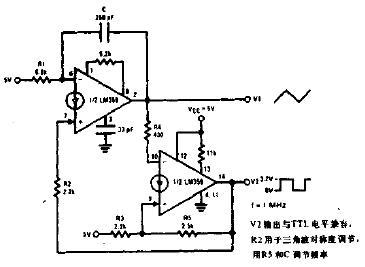
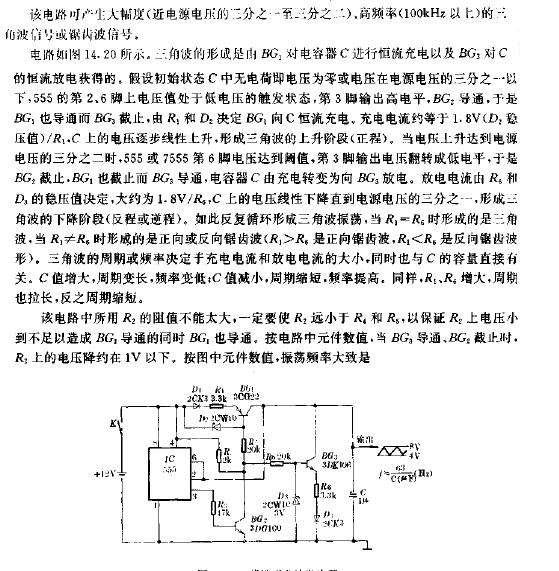
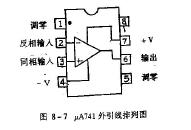
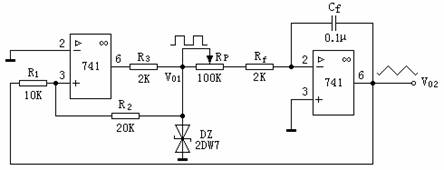
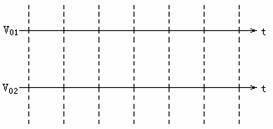
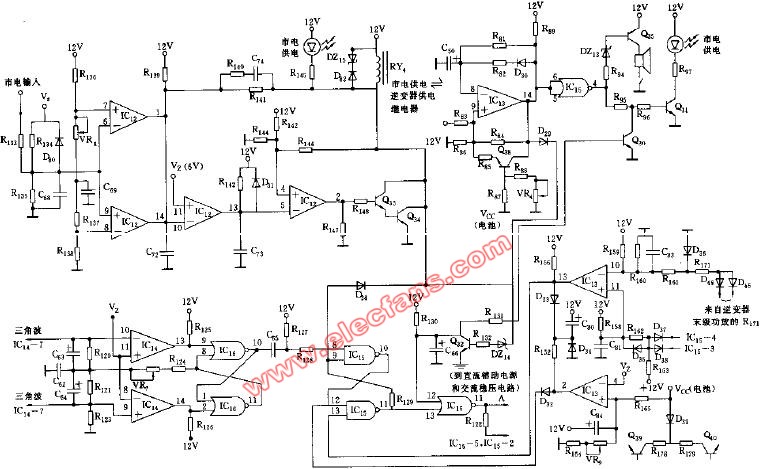
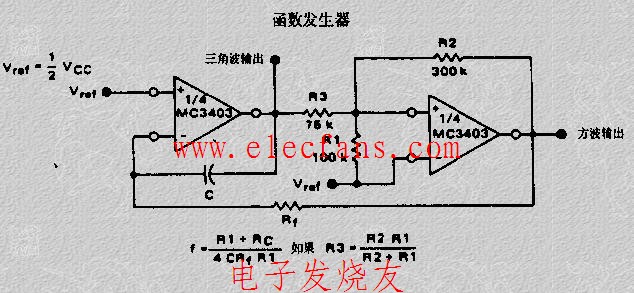
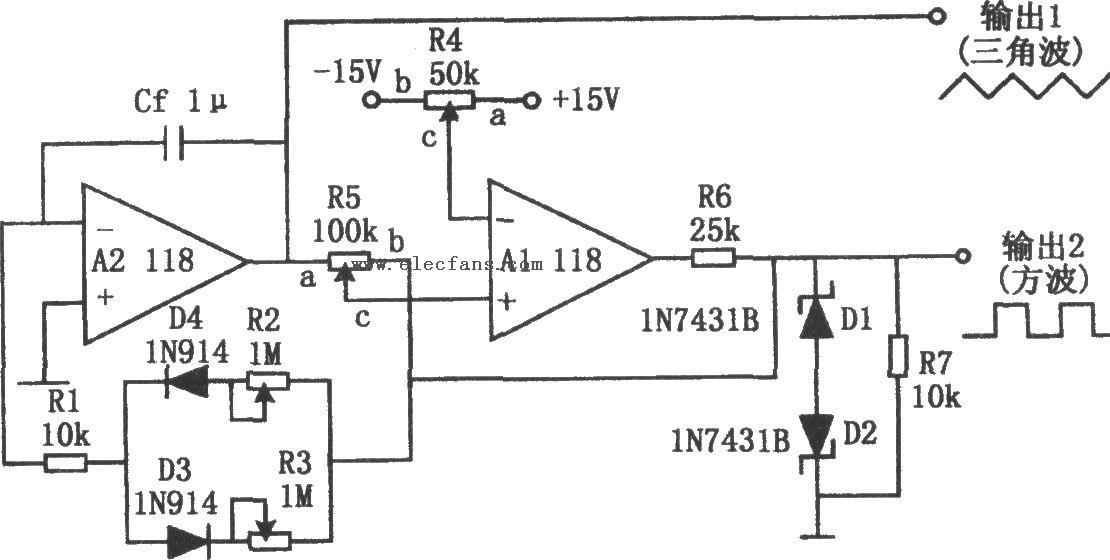
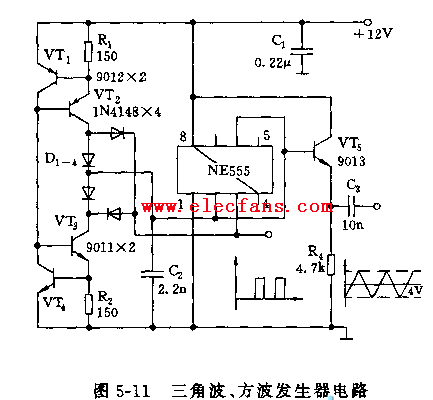

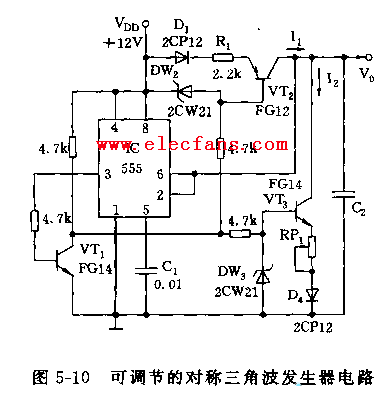










評論